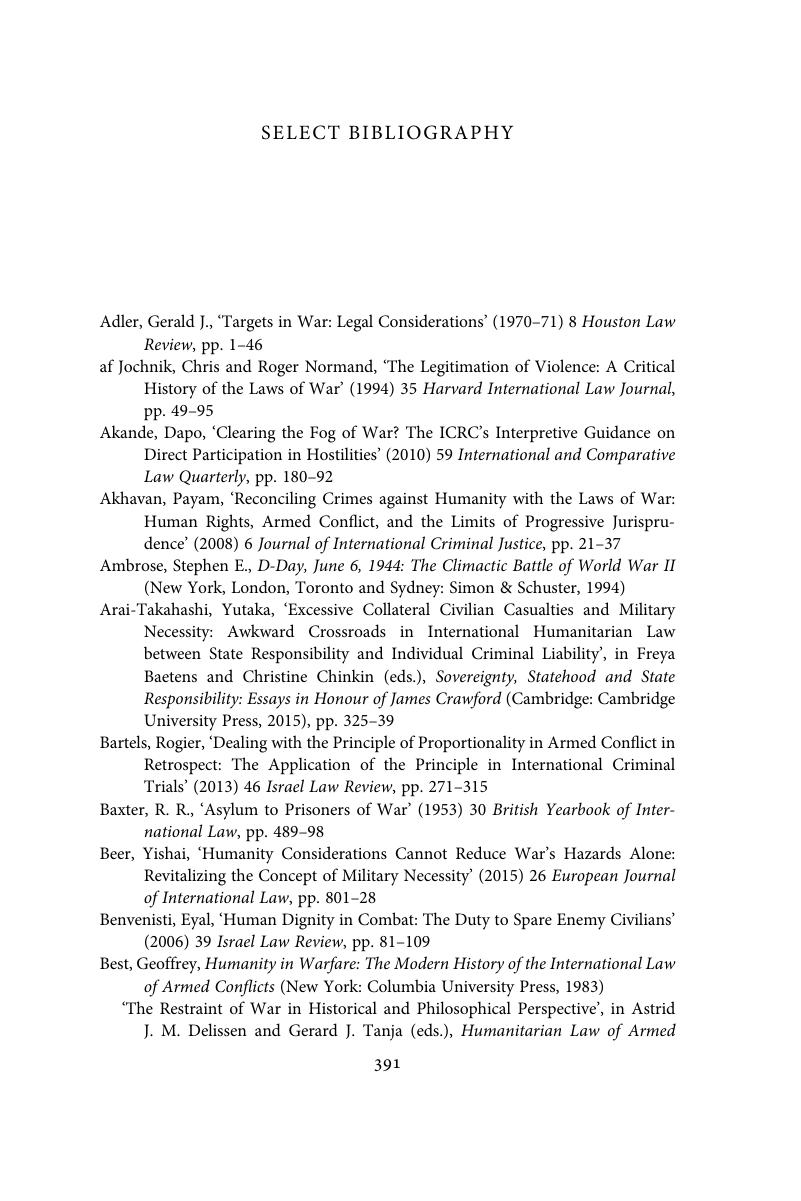Book contents
- Military Necessity
- Military Necessity
- Copyright page
- Dedication
- Contents
- Acknowledgements
- Treaties and Associated Instruments
- Table of Cases
- Abbreviations
- Part I Introduction
- Part II Military Necessity in Its Material Context
- Part III Military Necessity in Its Normative Context
- Part IV Military Necessity in Its Juridical Context
- Part V Conclusion
- Select Bibliography
- Index
- References
Select Bibliography
Published online by Cambridge University Press: 02 May 2020
- Military Necessity
- Military Necessity
- Copyright page
- Dedication
- Contents
- Acknowledgements
- Treaties and Associated Instruments
- Table of Cases
- Abbreviations
- Part I Introduction
- Part II Military Necessity in Its Material Context
- Part III Military Necessity in Its Normative Context
- Part IV Military Necessity in Its Juridical Context
- Part V Conclusion
- Select Bibliography
- Index
- References
Summary

- Type
- Chapter
- Information
- Military NecessityThe Art, Morality and Law of War, pp. 391 - 404Publisher: Cambridge University PressPrint publication year: 2020

